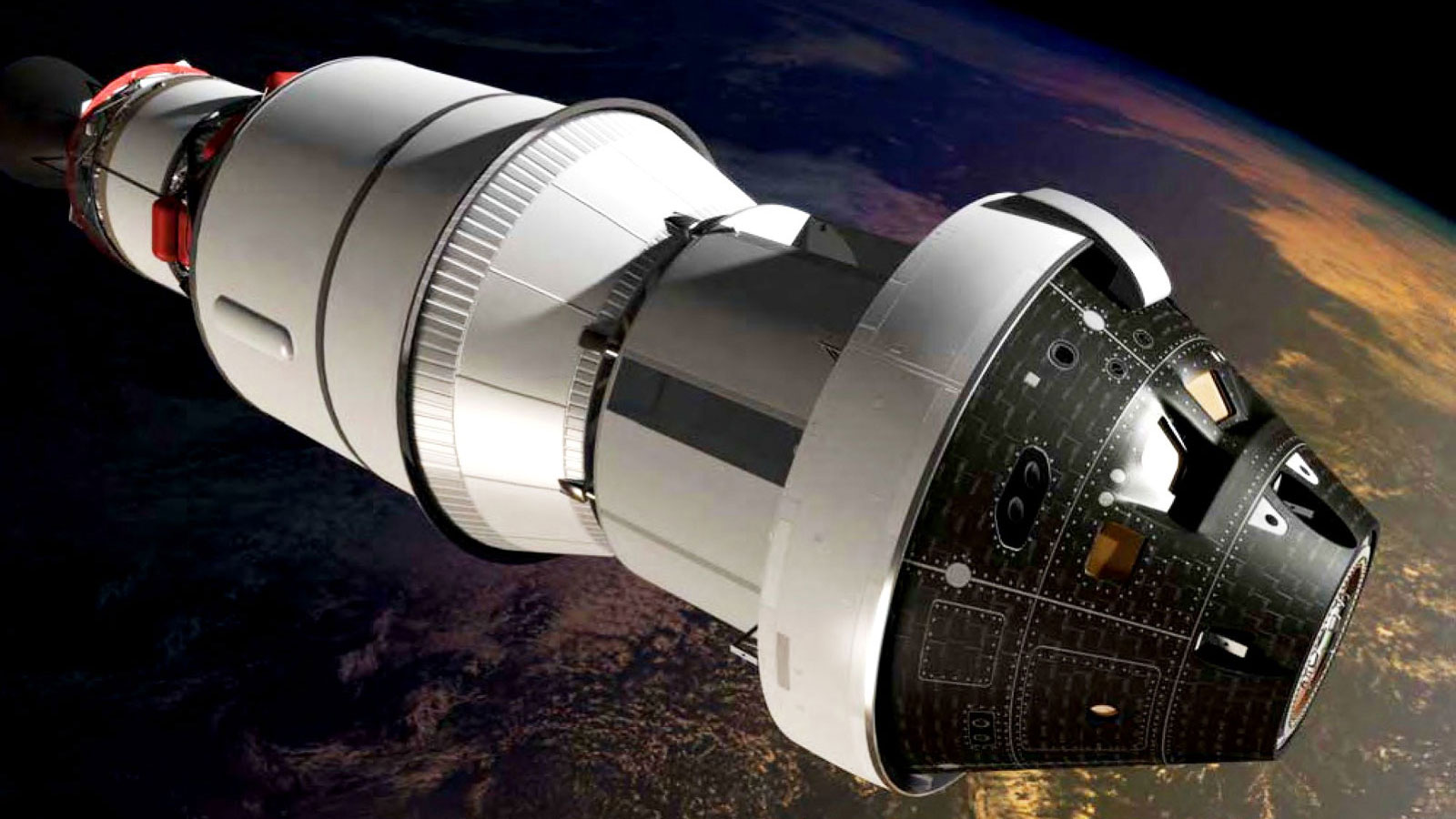Today’s Deep Space Extra offers the latest reporting and commentary on space related activities from across the globe. NASA’s Orion crew exploration capsule begins the Critical Design Review phase of development, leading to a late 2018 test flight atop a Space Launch System heavy lift rocket. NASA has selected Florida’s J.P. Donovan Construction to lead ground system preparations for future Space Launch System exploration rocket missions. NASA’s Jet Propulsion Laboratory plans new small satellite deep space missions. Proponents back the High-Definition Space Telescope as a possible Hubble successor. Made in Space and NanoRacks pioneer plans for 3-D satellite production in Earth orbit. Orbital ATK will acquire a second United Launch Alliance Atlas 5 to fulfill its NASA International Space Station re-supply agreements. Recent launch mishaps could slow the pace of small satellite launches. Hawaii’s community college students score a sounding rocket mission success.
Human Deep Space Exploration
NASA’S Orion spacecraft conducts CDR on the road to EM-1
Spaceflight Insider (8/13): NASA’s Orion crew exploration spacecraft has entered the Critical Design Review phase of its development, a milestone that is expected to extend into late October. The detailed review will prepare the spacecraft for a test flight atop NASA’s Space Launch System exploration rocket for the first time in late 2018. The test flight, designated Exploration Mission-1, will send the unmanned Orion spacecraft around the moon and back to Earth. “We’re working through our critical design review now so that we can balance evaluating individual components with the hardware manufacturing needs we have to start our assembly and integration activities,” said Mark Geyer, NASA’s Orion project manager.
NASA awards contracts for SLS ground systems
Spaceflightinsider.com (8/12): NASA has chosen J.P. Donovan Construction, based in Rockledge, Fla., as the prime contractors for upgrades to the ground support systems at the Kennedy Space Center to support future launches of the Space Launch System exploration rocket.
JPL studies missions, tech for future interplanetary cubesats
Space News (8/12): Small satellites may play a major role in future solar system exploration, say mission planners at NASA’s Jet Propulsion Laboratory. Two of the satellites, dubbed Mars Cube One, will accompany NASA’s InSight Mars lander as it lifts off in March 2016. MarCO will serve as a communications relay as InSight descends to the Martian surface. Future small satellites, flying as secondary or primary payloads, could hover over the surfaces of comets and asteroids or serve as landers and penetrators, JPL’s Sara Spangelo told a workshop at the Conference on Small Satellites in Logan, Utah.
What’s coming after Hubble and James Webb? The High-Definition Space Telescope
Universe Today (8/12): Proponents believe the proposed High Definition Space Telescope is a worthy candidate to succeed the 25-year-old Hubble Space Telescope and the James Webb Space Telescope, now set for a late 2018 lift off. The High Definition observatory would be designed to learn more about Earth-like planets orbiting distant stars.
Low Earth Orbit
In-space satellite construction may be coming soon
Space.com (8/12): Made in Space has joined with NanoRacks to announce a new capabilities for the production and assembly of satellite components aboard the International Space Station. Those innovations should bring a third capability, the launching of small satellites without a traditional rocket. The early strides of the Stash & Deploy system championed by Made in Space and NanoRacks should be in place by early 2016.
Commercial to Low Earth Orbit
Orbital ATK buys second Atlas rocket launch for Space Station run
Reuters (8/12): On Wednesday, Orbital ATK updated the company’s strategy to recover from the Oct. 28 loss of an Antares rocket moments after liftoff from Virginia’s Wallops Island with supplies bound for the International Space Station. Orbital will acquire a second United Launch Alliance Atlas 5 launch vehicle to give it more flexibility as it resumes cargo missions to the six person station in December. Use of the Atlas 5 and an upgraded version of the Antares beyond that will permit Orbital to meet its NASA contracted resupply obligations with fewer launches than originally planned.
Launch failures dent growth in small satellites
Space News (8/12): The growing interest in small satellites may wane in 2015 because of recent rocket launch failures, according to analysts participating in the Logan, Utah hosted Conference on Small Satellites. The losses of Orbital ATK’s Antares rocket on Oct 28 and SpaceX’s Falcon 9 rocket on June 28 are contributing factors.
Suborbital
NASA rocket successfully launches UH students’ payload
KaLeo, of the University of Hawaii (8/12): Experiments developed by students of Hawaii’s community colleges took flight Wednesday from NASA’s Wallops Island Flight Facility in Virginia atop a two stage sounding rocket. The payload included an ultraviolet spectrometer to characterize the intensity of the sun’s UV radiation as reaches the Earth. “This is really a system-wide collaboration, an effort to bring new industry and new technology into the Hawaii economy,” according to one of the students.

